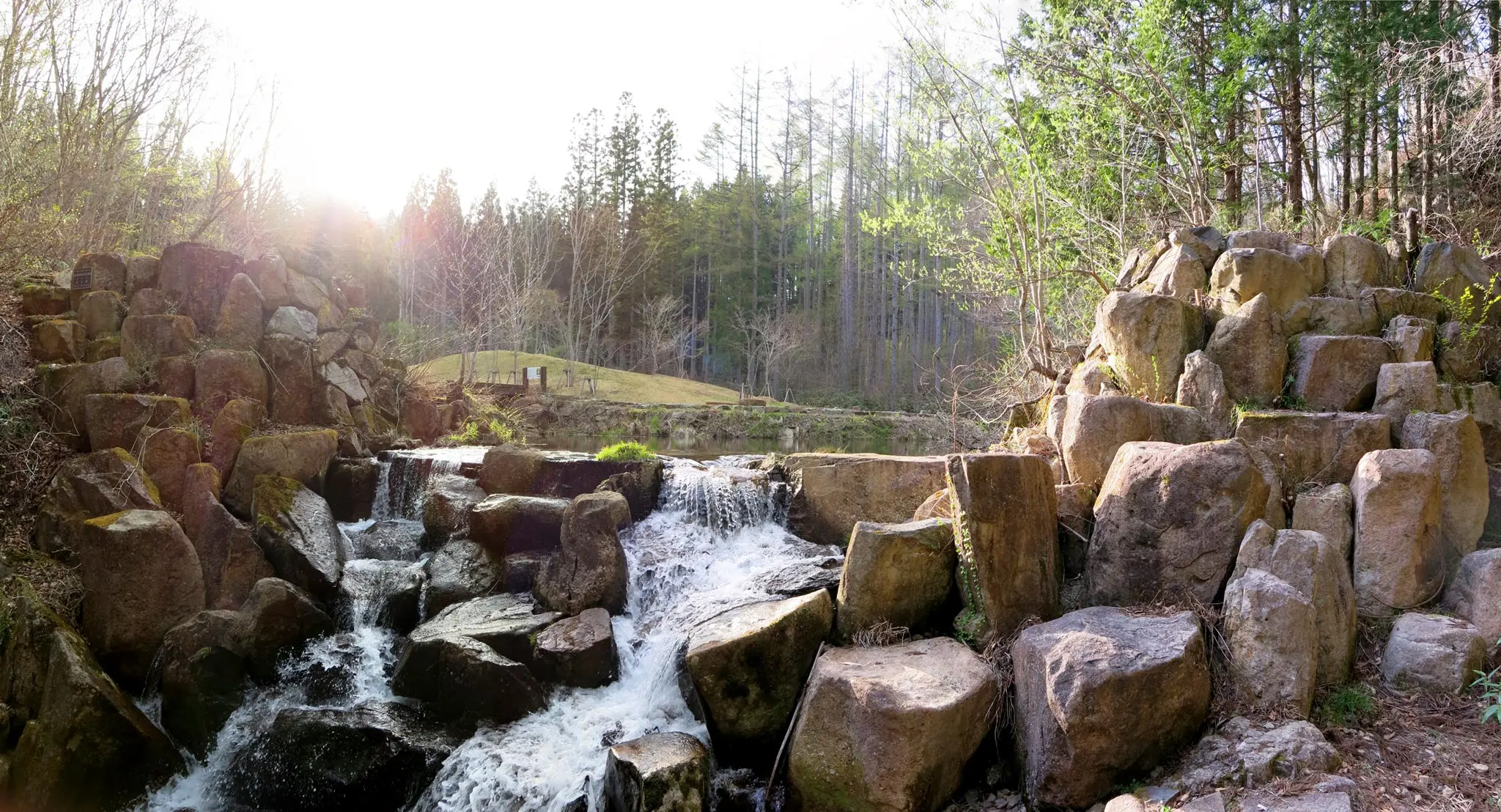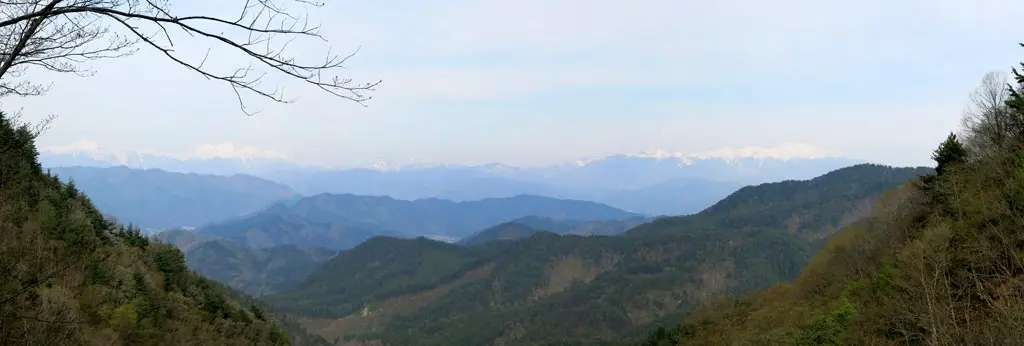In the town of Kokufu, which is part of Takayama City, there's a beautiful set of waterfalls named the 宇津江四十八滝, or Utsue Yosohachi Waterfalls. Though, from the name 四十八, which literally translates as 48, it's really easy to think that there are 48 waterfalls coming down the mountain. That's what I thought when I saw the sign on the side of the road. The following story is how that name came to be:
The Japanese text is from the website. I did my best translating it into English.
Once upon a time, in a village, there was a young man named Yoso-hachi よそ八, who lived with his mother かか様. In the Spring, the mother caught a cold. Because of how old she was, Yoso-hachi worried about her a lot. His mother loved fish, so Yoso-hachi went to the river to catch an イワナ, or Salvelinus (which is a kind of salmon). Unfortunately, he couldn't catch any fish that day, and he wondered why. He couldn't return home empty handed. In the mountains of Utsue 宇津江, there was a big pond with a large serpent. Yoso-hachi didn't know where this was, but somehow he got there. The pond was so calm it looked like a mirror. He cast his line in the pond, and was able to catch a beautiful shiny Salvelinus of 30cm. Nearby, wrapped around a spotted chestnut tree, was the serpent. It's eyes appeared to glow, but Yoso-hachi did not notice it. With his fish, Yoso-hachi raced back home to heal his mother. However, from the serpent's magical energy, Yoso-hachi had caught a fever, and was now bedridden, too.
昔むかし、この里に「よそ八(はち)」という若者が「かか様」(母)と住んでいました。 ある年の春、かか様はちょっとした風邪がもとで寝込んでしまいました。なんといっても寄る年波なので、 起きて出る元気もなかったのです。 よそ八は魚の好きなかか様に食わせてやりたいとイワナをとりに行きました。 どうしたのやら、その日に限ってちっとも釣れないので、我を忘れてどんどん奥へわけいってしまいました。 宇津江の山奥には大沼があって大蛇がいるという話でした。よそ八は知らないうちに、とうとうその沼に来てしまいました。 沼は鏡のように静まり返っていました。釣り糸をたれると一尺(30cm)もあるイワナが面白いほど釣れたのです。 ひょっと見ると、沼のふちの栗の木に大蛇が巻きついてランランと光る目で見ているので、びっくりして一目散に家へ逃げ帰りましたが、 大蛇の妖気に打たれて高い熱を出して寝込んでしまいました。
That night, he was visited by a young woman who nursed him back to health. Every night for 10 days, this woman visited Yoso-hachi like it was a dream. She finally spoke, "I am serpent who lives in the pond of Utsue 宇津江. I have trained a thousand years by the sea, and a thousand years in the mountains, and now I can finally ascend to heaven. Because you've shown great respect and care for your mother (親孝行 / おやこうこう / Filial Piety), I have given you my blood. I will create a storm and ascend to heaven. And I shall never return." The young woman then disappeared. Later, a great monk heard this story and replied, "Wow! You saved the serpent!" And from that day, Yoso-hachi began praying to the Buddhist god Acala (不動明王 / ふどうみょうおう). 21 days later, there was a great thunderstorm. Lightning lit the skies, thunder cracked through the woods, and the rain was immense. The serpent had now ascended to heaven to become a dragon.
その夜、美しい旅の娘が訪ねてきて親切に看病してくれました。数十日後、すっかり元気になったよそ八の夢に娘が現れ、 「私は大沼に住む大蛇です。海に千年、山に千年の修行が終わったので、天に昇らなければなりません。親孝行のあなたを 助けてあげようと私の血をしぼって飲ませました。今の私は嵐を呼ぶ力も、天に昇る気力もなくなってしまいました。」 と告げ、二度と戻ってきませんでした。 話を聞いた偉い行者が「よし、わしがその大蛇を救って進ぜよう」と断食して不動明王に願掛けして祈祷を始めました。 ・・・そして満願の二十一日目・・・天にわかにかき曇り稲妻が光り、雷鳴するどく大嵐となり、風を呼び雲を起こした大蛇は 龍になって天へ昇って行きました。
The Next day, when Yoso-hachi went to the valley, there were some 10 waterfalls carved out of the rugged rocks that shined brilliantly. The big pond had dried up. The chestnut tree, from the roots to its branches, was wrenched and twisted. In later years, Koubou Daishi 弘法大師, a monk who had traveled to various countries, remarked, "Yoso-hachi is the reincarnation of Acala (or Fudoson / 不動尊 / ふどうさん). In Buddhism, his name, Yo-So-Hachi, represents 四 (yo), 十 (so), 八 (hachi)." After that, everyone began to call the waterfalls 四十八滝, or Yoso-hachi waterfalls. The waterfalls also became known for cleansing impurities. This famous tale is very old, and these are all the facts that remain of it.
翌日行ってみると渓はごつごつの岩肌が出て大小数十段の滝ができてキラキラと輝いていました。 そして大沼はすっかり干上がって、栗の木は根元から枝先までねじれてしまっていたのです。 後年、諸国修行の途上立ち寄った弘法大師が「その行者は不動尊の化身であり、よそ八(四十八)とは仏法四十八願を意味するものであろう。」 と言われ、以後この滝を四十八滝と呼ぶようになったと言うことです。 また四十八滝は不浄を忌み、不浄なことをすると必ず大夕立となり、昔より水乞いのとしても有名で各種の文献に史実が残されています。
So, again, 四十八 literally translates to 48. 四 (yon) is kanji for 4. 十 (juu) is kanji for 10. And 八 (hachi) is kanji for 8. But, kanji have many different readings. From the story, 四 can be read as 'yo', 十 can be read as 'so', and 八 is still read as 'hachi'. Yoso-hachi, again, is the main character's name and the waterfalls are named after him. Even the road signs in Kokofu mistranslate this as Shijuuhachi. (Shi is the most secondary reading for 4 in Japanese.)
The Japanese language does this a lot with numbers. That concept is known as Goroawase 語呂合わせ. I wrote a little bit about this a while ago: November 7th, 2009. I think the most well-known one is 39. 39 translates to さんきゅう or san-kyuu. Saying "san-kyuu" sounds like Thank you. So, Japanese people will try to get phone numbers with 39. License plates, too. They'll tack it on the end of their email address. There's also a chain of a retail stores called 39.
Anyway, let's get on to the photos.
It takes a little while to drive to this area from Route 41. There's plenty of parking, though. The whole area is like a camp ground with a large flower field, and a hot spring museum, too. :) As you walk up the road, you reach the bottom of the hiking trails that lead up Utsue 宇津江 mountain. And from there each waterfall is clearly marked with a little story about itself. There are 13 named waterfalls as the water streams down the mountain over the rocks.
滝, or Taki, is the Japanese word for waterfall.
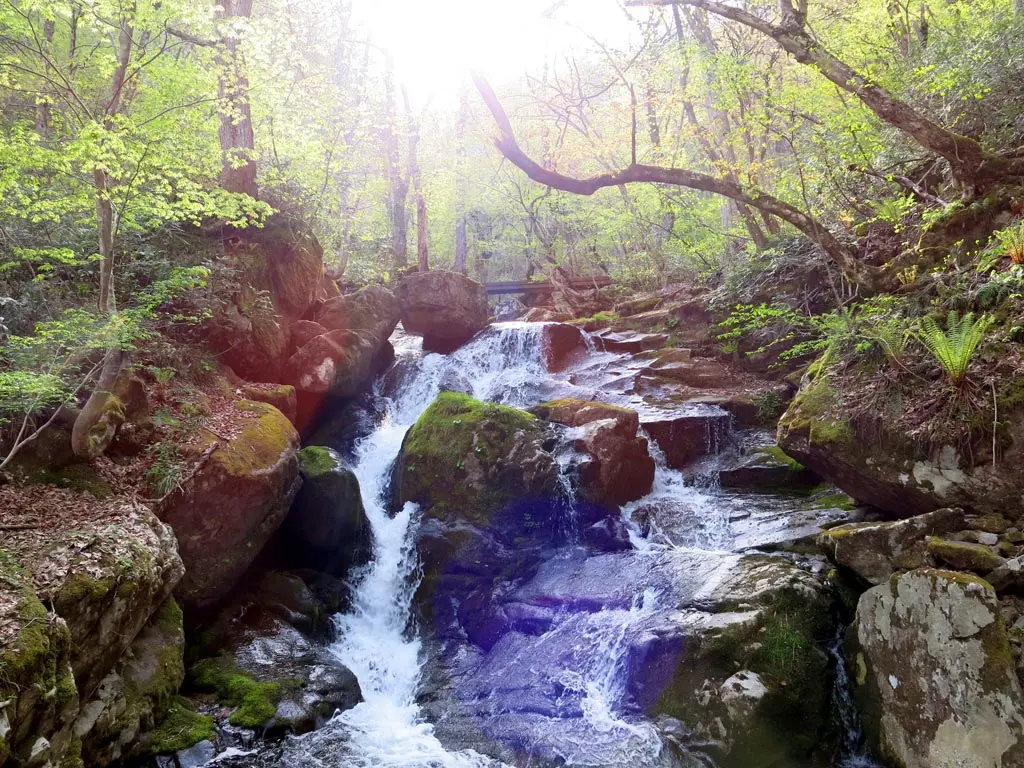
The first waterfall is named Uogaeri. 魚, or uo, is another reading for sakana, or fish. 返る, or kaeru, means to return. This waterfall represents a gate for any fish that have traveled upstream this far. The waterfall is too steep for any fish to climb. So, the name means that this is where fish return.
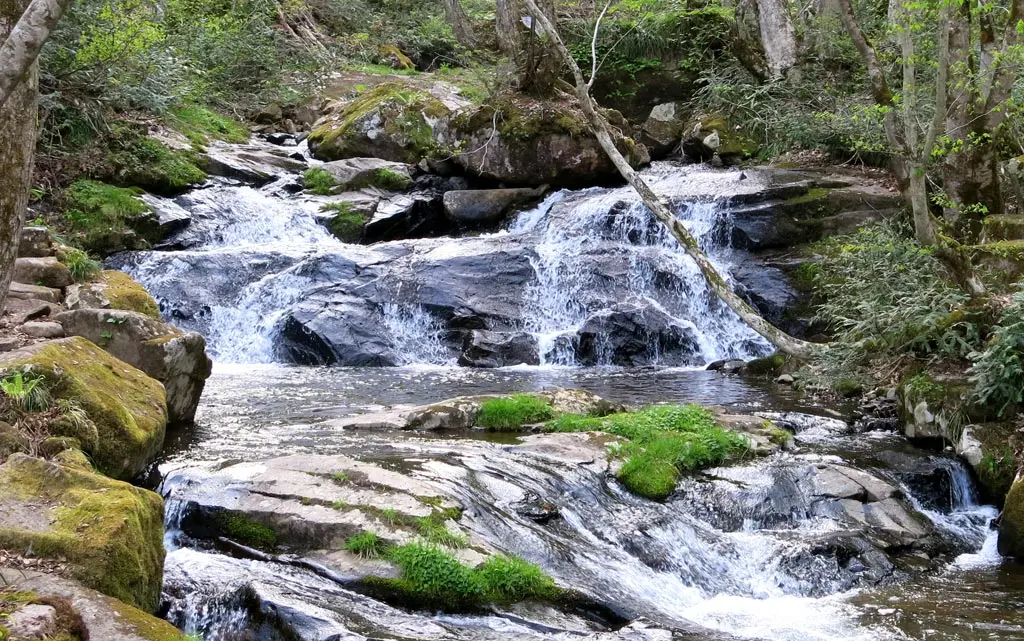
The second waterfall is Asagiri, or Morning Mist. The waterfall got that name because of the beautiful mist that gathers in the morning.
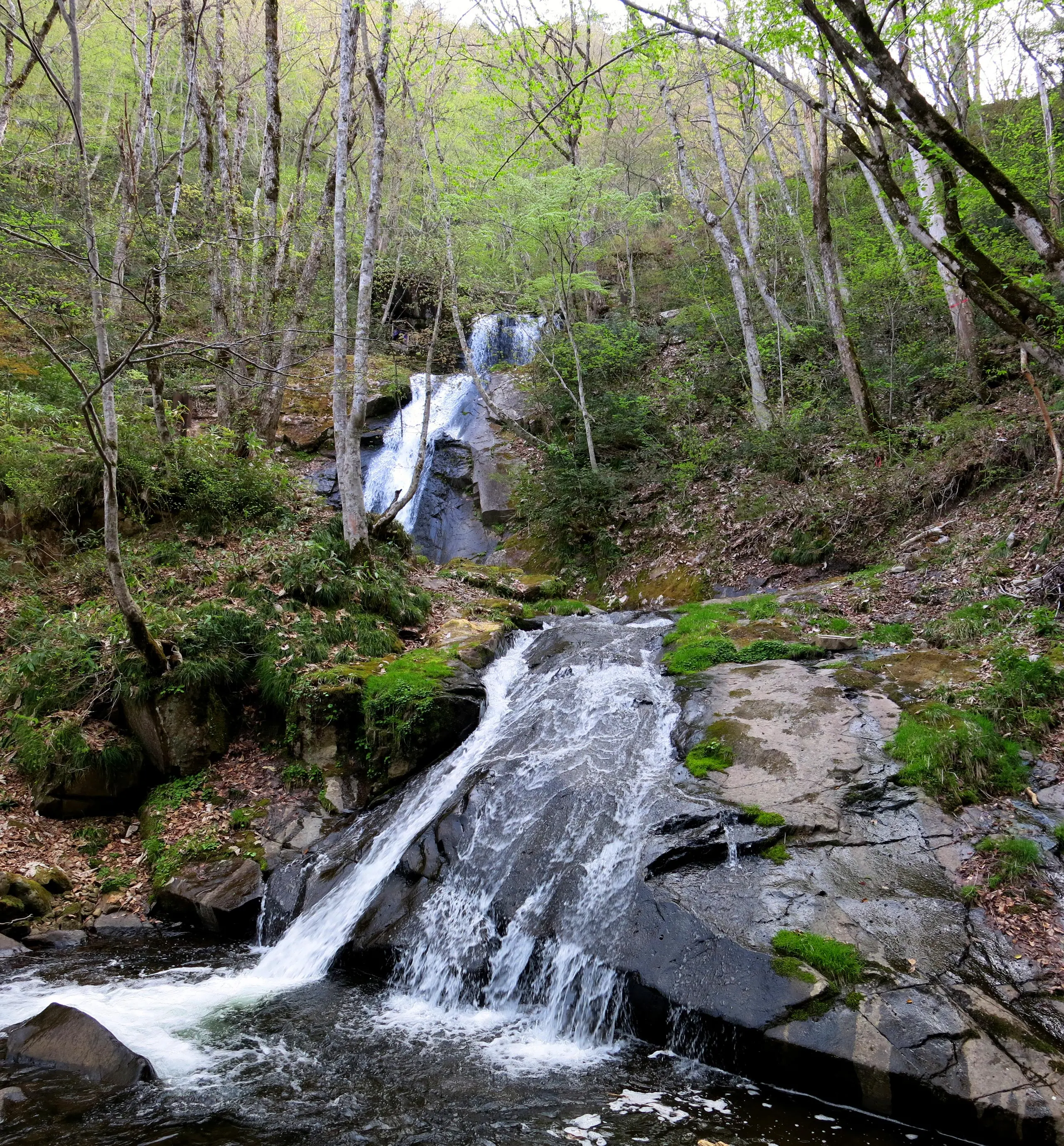
This is the Hira waterfall. Hira, or 平, represents something that is broad and flat, like the palm of your hand. The water flows smoothly across the rocks, so it seemed like an appropriate name.
In the photo above, you can see the next two waterfalls, as well. From the bottom up, there's Hira, Hako, and Joudan.
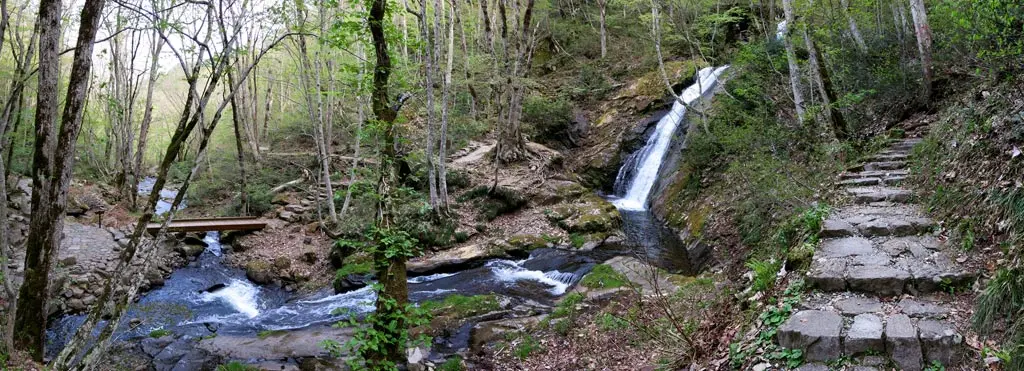
Hako, or 函, is an old kanji that translates as box. At least, I think it does. Apparently, the waterfall looks like a sword cutting through the rock. The sword looks like it's coming out a square, so I guess that square is where the name comes from.
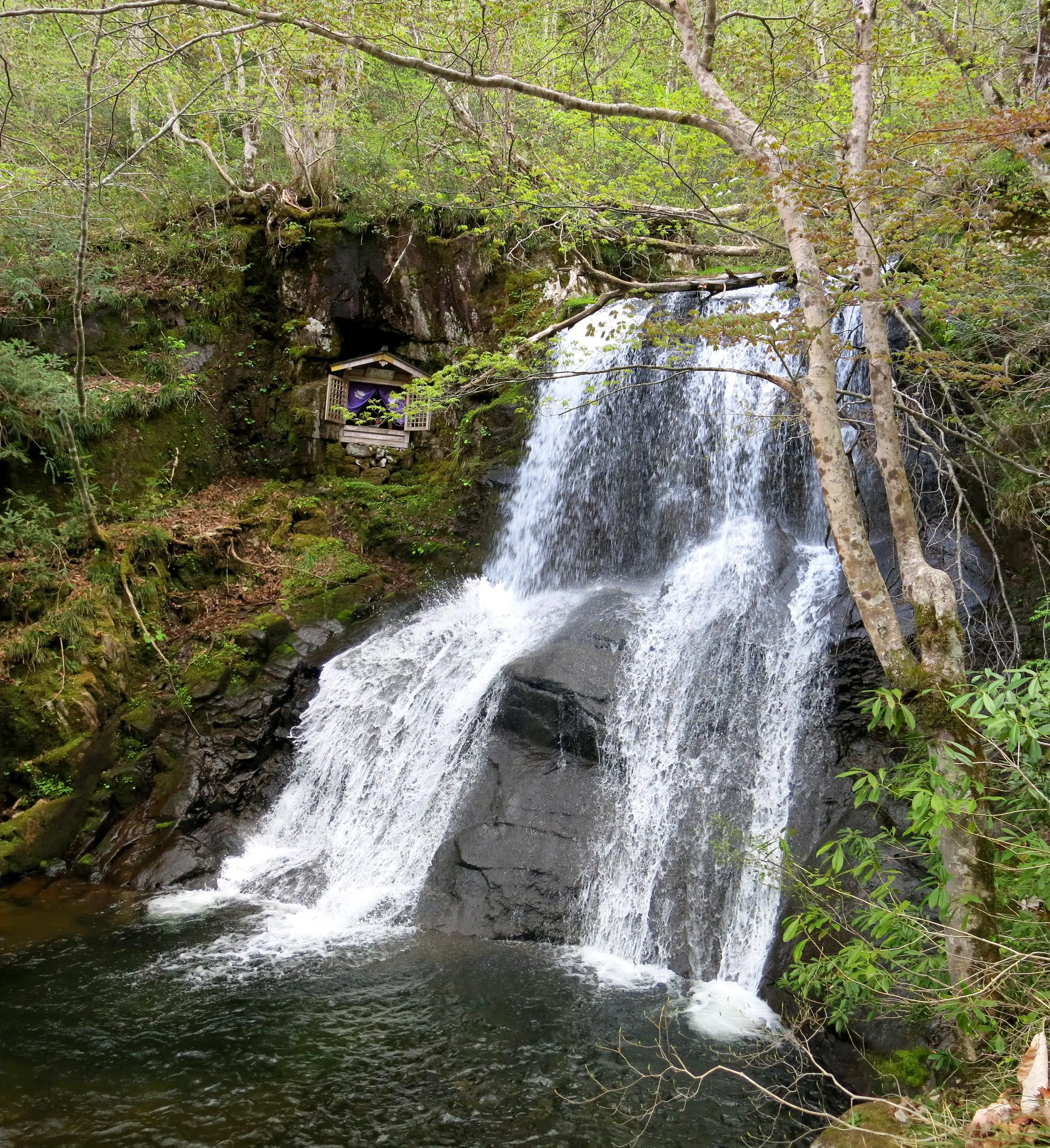
Joudan translates as the Upper section. It's named that because it's the upper most part of the 3 waterfalls ending with the Hira waterfall.
On the left side of the waterfall is a shrine devoted to Acala, or in Japanese, it's 不動明王 or ふどうみょうおう. In Japan, this is the buddhist god of "immovable wisdom."
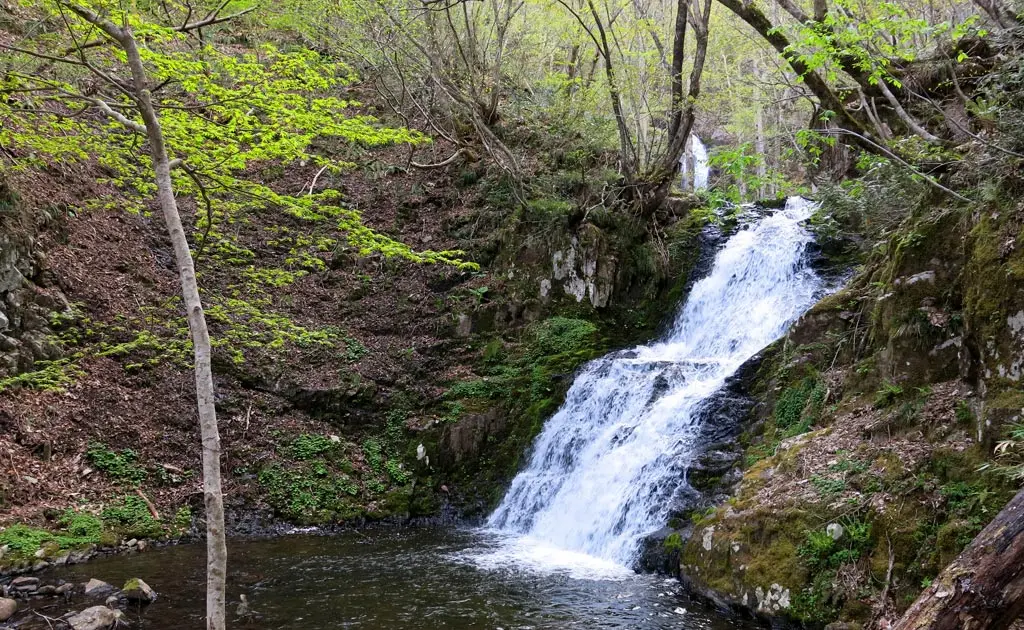
The Kiyonoki Waterfall gets its name from the sound the water makes as it travels over the rocks. Those that named it thought it sounded like the voice of 梵, or Brahma, the Hindu god of creation. Kiyonoki directly translates as "the voice of Brahma."
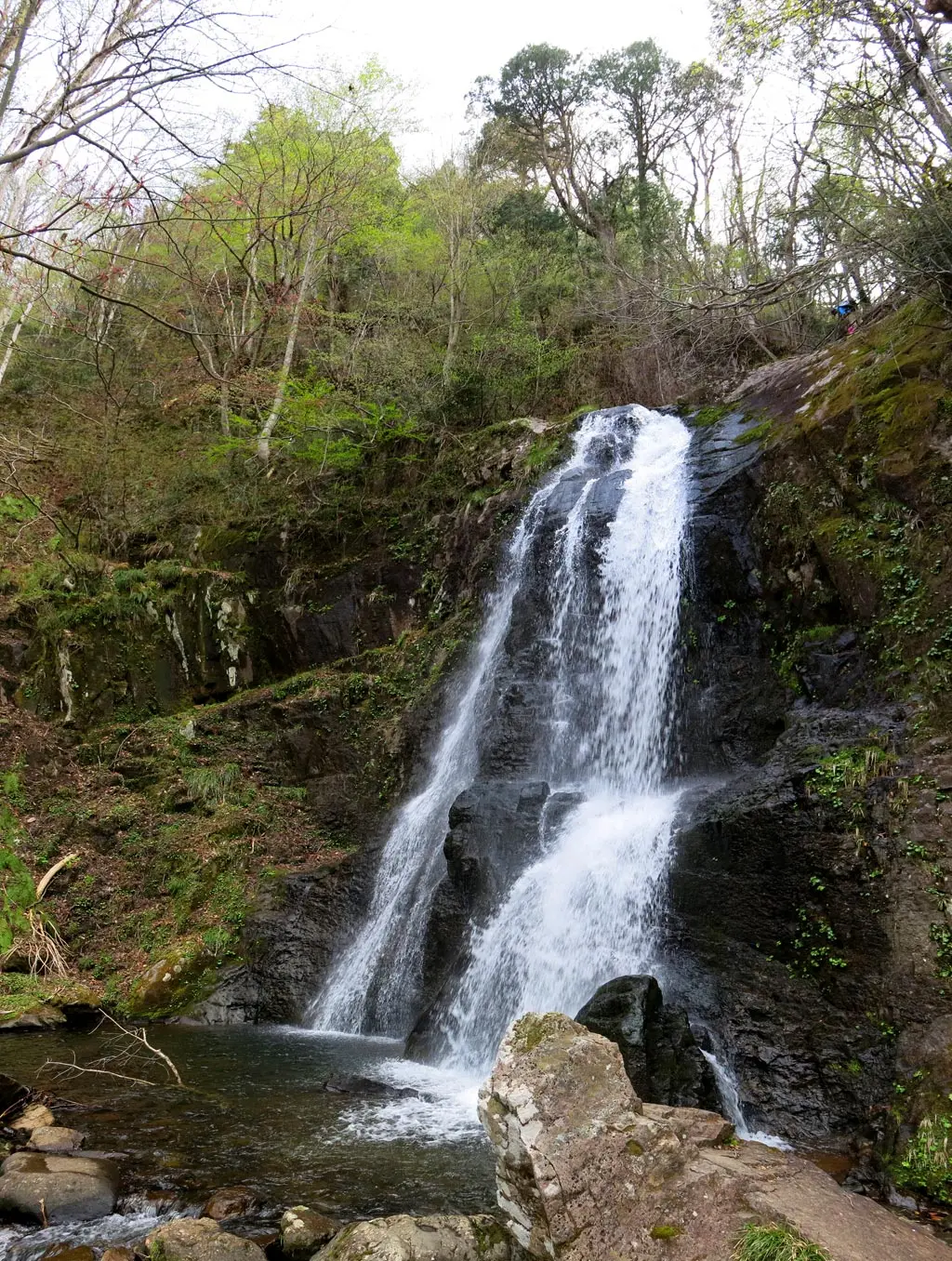
王 stands for King, so Ou Waterfall literally translates as the King Waterfall. It's named this because it's the largest waterfall in the group.
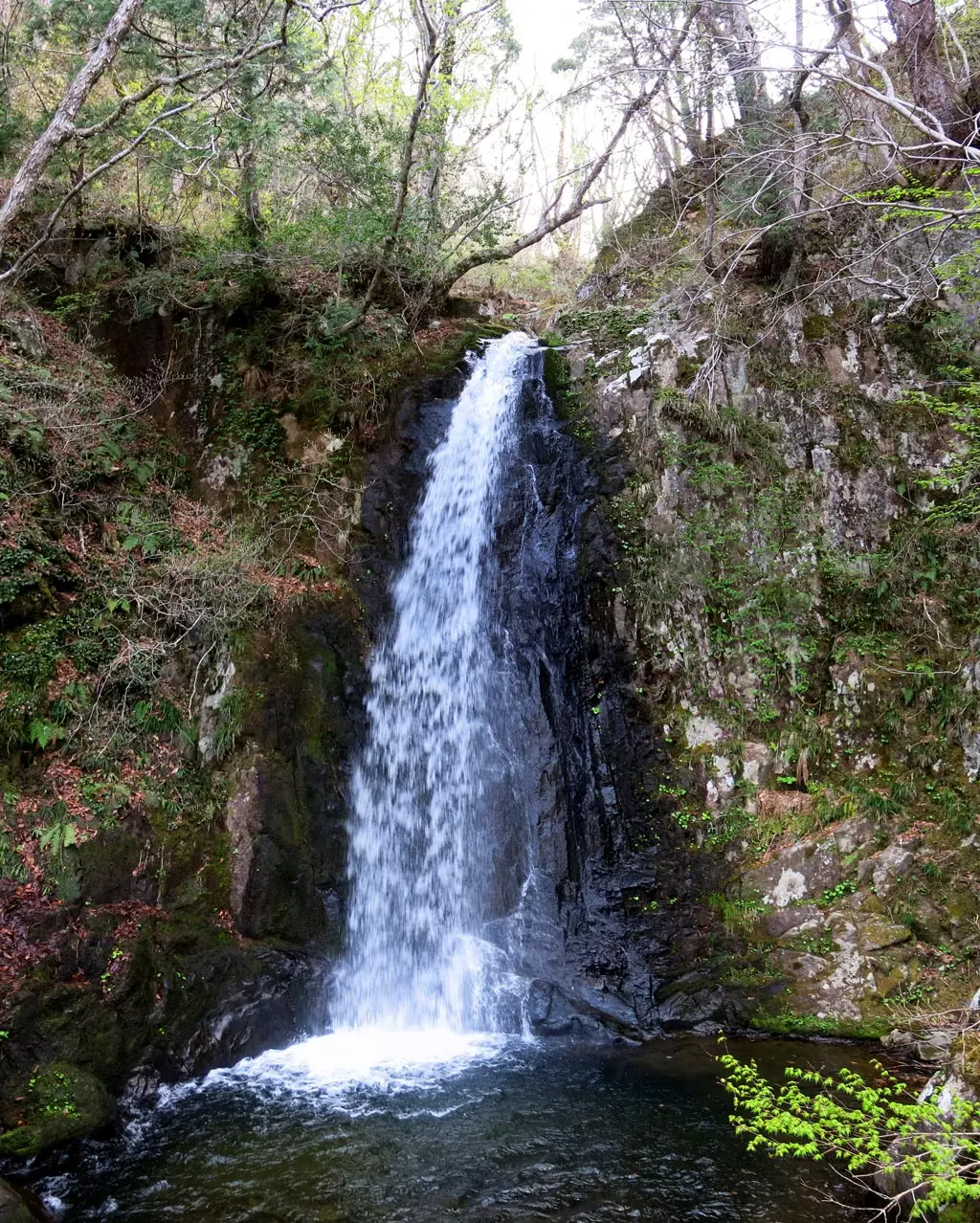
This is the Choushikuchi Waterfall. 銚子 or Choushi translates as a sake decanter, which is the bottle restaurants use to serve sake. 口, or kuchi, means opening, or mouth. The waterfall has this name because it looks like the water is being poured from a sake decanter.
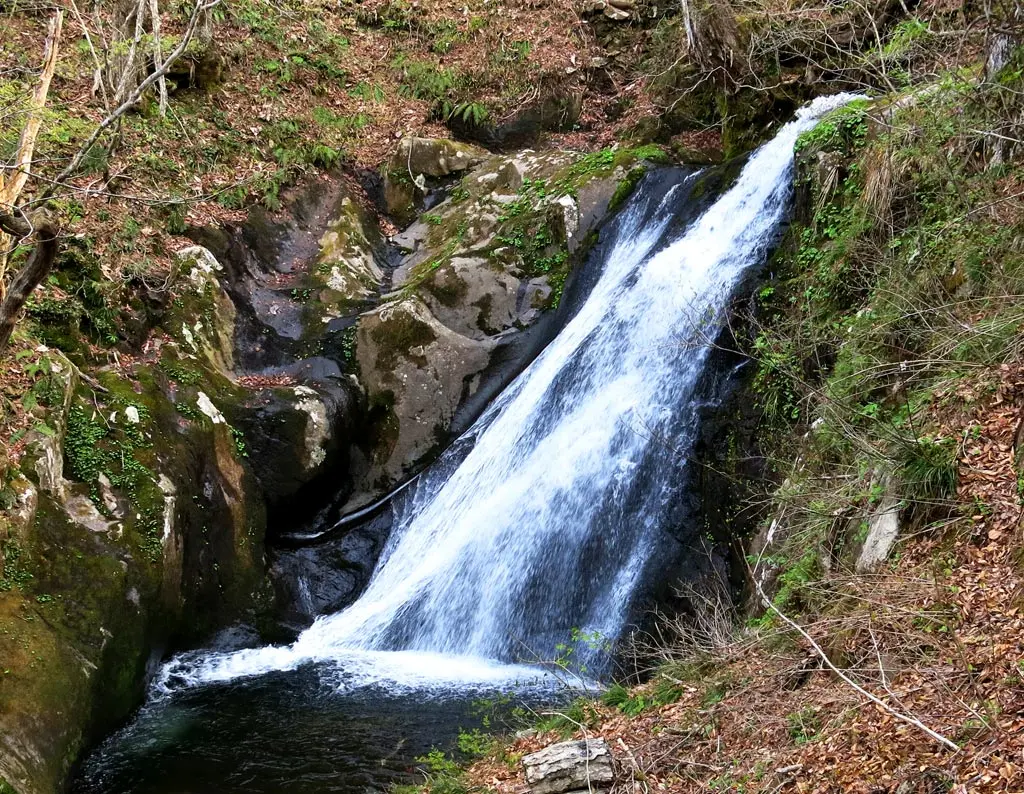
The ninth waterfall is named Aori. 障泥 translates as part of the saddle of a horse. This is the cloth that goes across the belly of the horse and protects it from mud, and whatever else might be kicked up from the ground. I didn't take a very good picture, but the name comes from the area between the two streams of water.
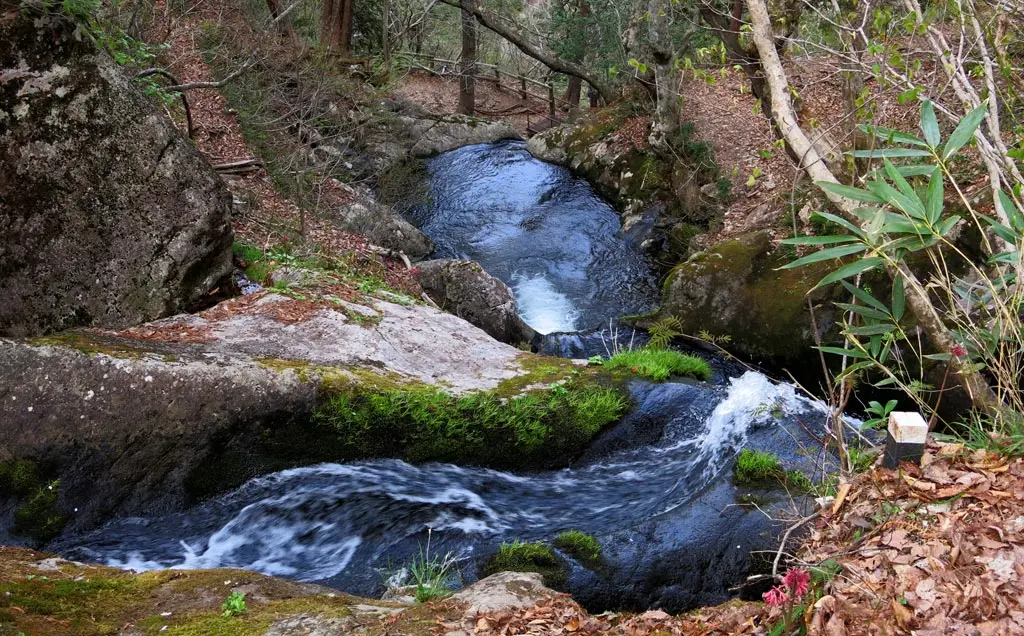
わん, or wan, is a very old word for bowl. So old that the kanji for wan doesn't appear on the Mac, or in most web-font sets. The Japanese website doesn't use the kanji that appeared on the signs in the park. Sui, or 水, is water.
This waterfall is named Wansui because the swirling water that cut through the stone, has the same swirl when you fill a bowl with water.
It didn't look all that impressive from the front, but when I saw it from above, it looks like a water slide. :)
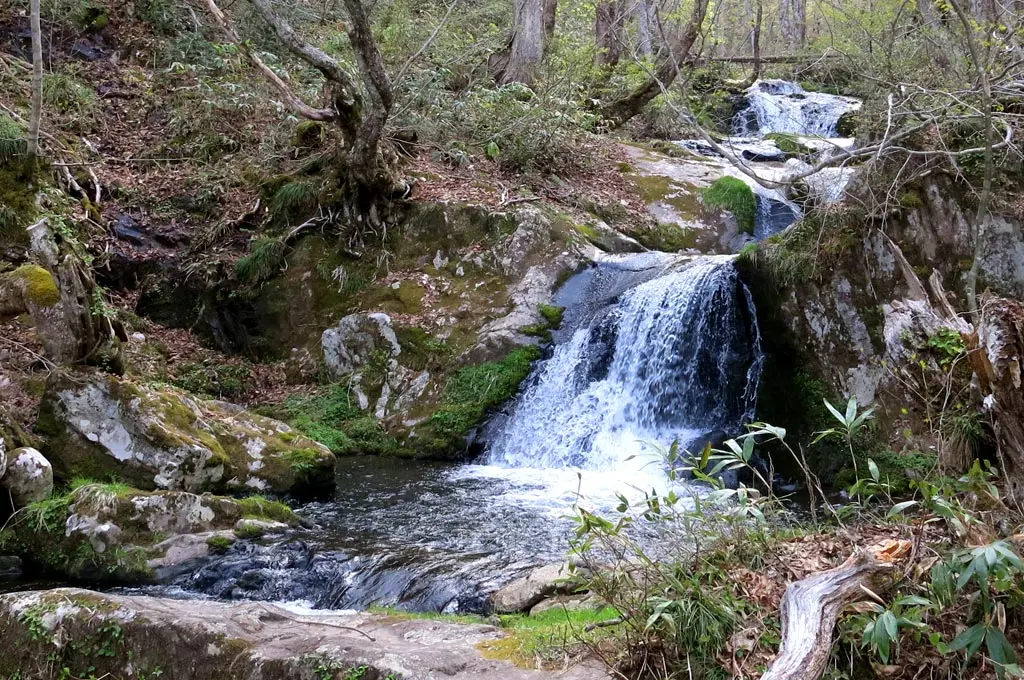
This is the Ruri waterfall. 瑠璃 is the Japanese word for Lapis Lazuli, and those are brilliantly deep blue precious stones. It was named this because the water flowing over the rocks is very even, and shines beautifully when the sun passes through the surrounding trees.
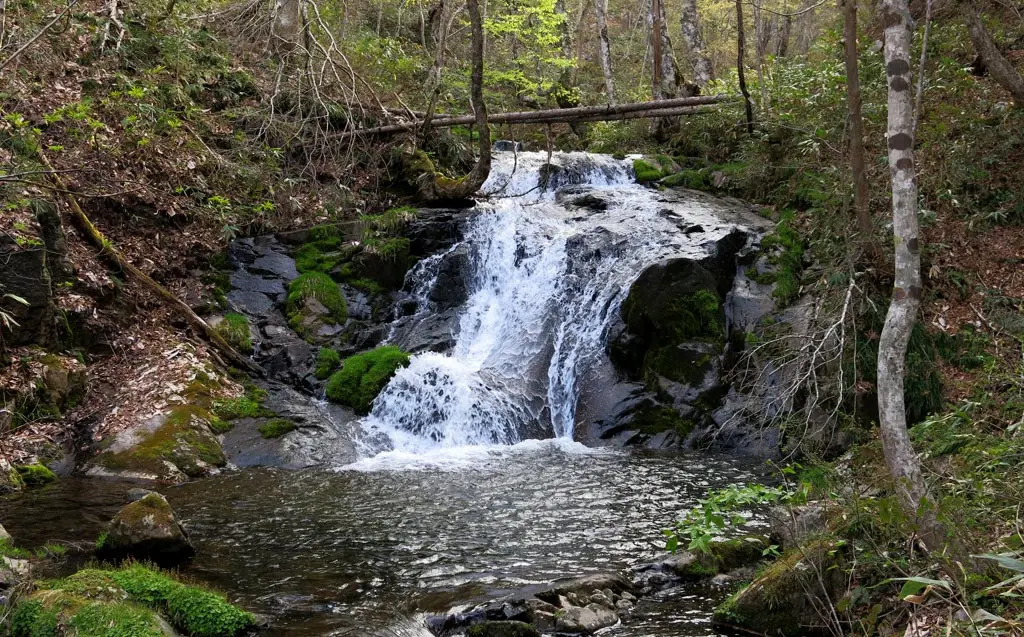
Nunosarashi Waterfall is the second to last one on the hike. It literally translates as Bleached (晒) Cloth (布). The name comes from how smooth the water looks. Apparently, it looks just as smooth as that kind of cloth. Though, it doesn't look that way in my photo at all. I'm sure all these waterfall look much more majestic after it rains.
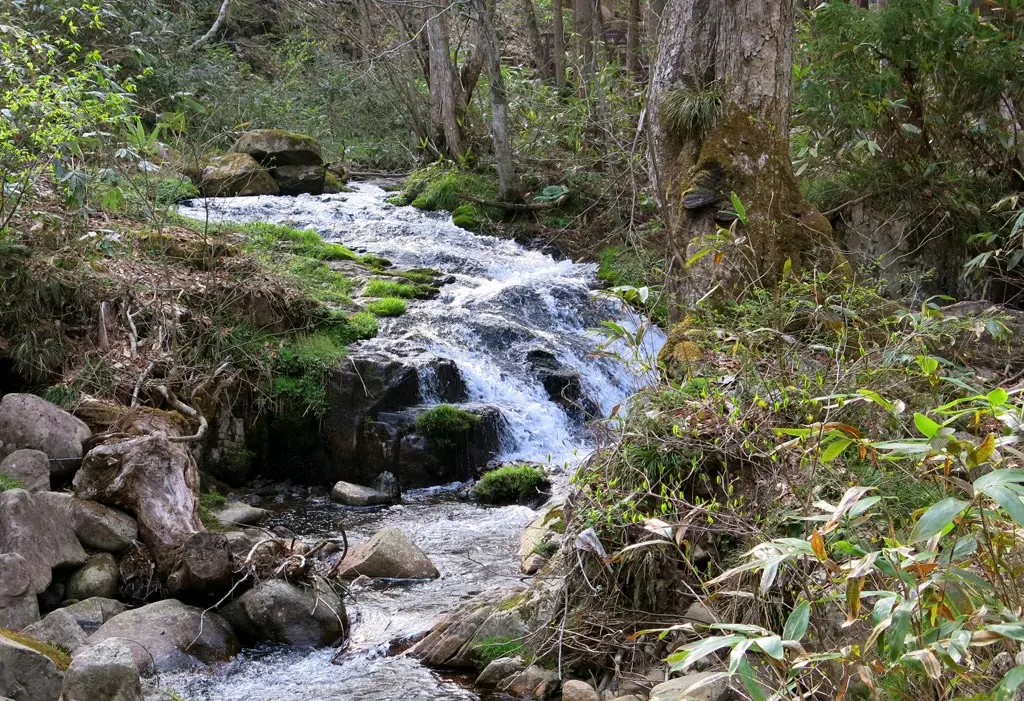
Kamihira Waterfall is the last waterfall. Again, 平, or Hira, represents something very broad and flat. And since they already had a Hira waterfall, they named this the Upper Hira waterfall.
And then you reach the top.
The very top of the procession, and the end of the hiking trail is called the Yosohachi Waterfall Plateau 四十八滝高原. At this plateau is a beautiful still pond surrounded by trees. The water is very still, and eventually it moves over the rocks, and travels down all the waterfalls. I wonder if this pond is supposed to represent the original pond that Yosohachi found all those years ago. Or maybe it actually is the original location. There's a huge mound of dirt near the pond, too, so maybe that's his grave, or something.
Just after Aori Waterfall (number 9), there's a break in the trees, and a raised platform that allows you see just how far you've climbed so far. You're able to see the beautiful mountains towering over Takayama, too.
On the left of the photo is the Norikura mountain range 乗鞍連峰. On the right of the photo is the North Alps 北アルプス. But, in front of the North Alps, or possibly included in the North Alps is the Hotaka mountain range 穂高連峰. Norikura and Hotaka are both located within Takayama's borders, so I think this photo gives a decent idea of just how large an area Takayama occupies. From this location, it would take about an hour (maybe less) to drive to either.
